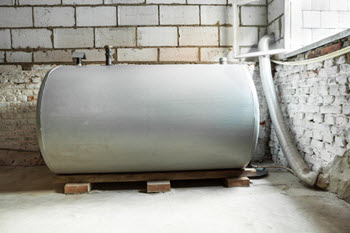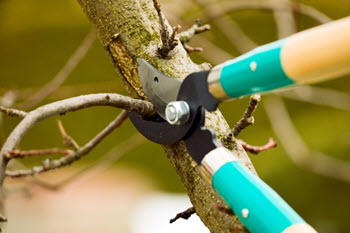 If you use heating oil to heat your home in the winter, then you have a heating oil storage tank. Whether you have an above-ground or underground oil tank, you should ensure it is in pristine condition and ready for the winter months.
If you use heating oil to heat your home in the winter, then you have a heating oil storage tank. Whether you have an above-ground or underground oil tank, you should ensure it is in pristine condition and ready for the winter months.
Caring for your oil tank in the winter is particularly crucial because the frigid winter temperatures will likely magnify any problem. To avoid the cost and stress associated with a damaged tank, you need to know how to care for your tank.
Table of Contents:
Maintaining Oil Tanks In The Winter
In this article, we will share some tips on how to care for your oil tank in the winter. This way, you can avoid any issues and prevent any unnecessary damage to your oil tank.
Insulate Your Oil Tank
When subjected to freezing winter temperatures, heating oil generally turns from a liquid state to a semi-solid state (congeals), which means it cannot flow properly. To ensure your heating oil does not congeal in the winter, insulate and shelter your heating oil tank and your fuel supply pipe.
Inspect Your Oil Tank For Leaks And Damage
 Inspect your entire heating oil tank thoroughly for leaks and other signs of damage, including cracks, dents, and corrosion. Additionally, check for damaged or loose connecting pipes, fixtures, filing points, and caps. While at it, remember to check the base of your oil tank, too.
Inspect your entire heating oil tank thoroughly for leaks and other signs of damage, including cracks, dents, and corrosion. Additionally, check for damaged or loose connecting pipes, fixtures, filing points, and caps. While at it, remember to check the base of your oil tank, too.
If you notice any issues, call a qualified HVAC contractor to perform the necessary repairs, including replacing any worn out parts. If left unattended, these issues could potentially cause oil to leak out of your storage tank or water to leak into your storage tank, leading to pipe blockages and furnace damage. Remember, oil leaks will not only cause your heating bills to increase but also damage the environment. To avoid these problems, ensure your oil storage tank is in pristine condition before winter arrives.
Follow The Suggested Manufacturer Maintenance Recommendations
In addition to checking for leaks and signs of damage, you should call an experienced HVAC technician to inspect your tank’s components including the gauges, values pipes, and alarms. To be on the safe side, you should adhere to the manufacturer’s recommended maintenance schedule.
Cut Back Vegetation Around Your Oil Storage Tank
 Granted, trees, shrubs and other vegetation are important landscaping features. Unfortunately, vegetation can also make it difficult to spot your oil tank. At the same time, plant roots and tree branches can damage your storage tank during winter storms. What’s more, such obstacles can restrict access to your oil tank, making it difficult to fill up your tank. For these reasons, you should remove any vegetation around and on your oil storage tank. Moreover, to ensure you have a successful heating oil delivery, clear all obstacles, including tree branches, on the path to your fill pipe or storage tank. Be sure to inspect your bund areas and the vents to ensure they are not clogged with debris and leaves.
Granted, trees, shrubs and other vegetation are important landscaping features. Unfortunately, vegetation can also make it difficult to spot your oil tank. At the same time, plant roots and tree branches can damage your storage tank during winter storms. What’s more, such obstacles can restrict access to your oil tank, making it difficult to fill up your tank. For these reasons, you should remove any vegetation around and on your oil storage tank. Moreover, to ensure you have a successful heating oil delivery, clear all obstacles, including tree branches, on the path to your fill pipe or storage tank. Be sure to inspect your bund areas and the vents to ensure they are not clogged with debris and leaves.
Monitor Your Heating Oil Consumption Carefully
Before winter arrives, monitor your heating oil consumption. If your furnace consumes more oil than expected, your oil tank could have a problem. To avoid sludge buildup at the bottom of your oil tank, do not allow your oil tank to run low or empty. This is particularly important because sludge buildup will cause your unit’s air filter to become clogged. If left unattended, a clogged air filter may cause your heating system to malfunction, leading to expensive repairs.
Conclusion
Whether you have an underground or an above-ground heating oil storage tank, you should ensure it is ready for the winter. More specifically, you should ensure your tank is well insulated, secure, visible and easily accessible. At the same time, inspect your oil tank’s pipes and fittings for signs of damage and lose connections. More importantly, get a qualified HVAC technician to check your heating system regularly, including your tank.
For high-quality HVAC services and affordable heating oil, get in touch with PFO Heating & Air Conditioning.
We offer a wide range of home comfort services including heating repairs, tune-ups, and replacements. PFO also provides fast heating oil deliveries even when the weather is extreme outdoors. We offer different delivery plans and financing options so that you can customize your fuel deliveries to meet your needs. In addition, our experts can come to your home and inspect your tank for you. We will let you know of its condition and tell you if an oil tank replacement is imminent. Call PFO Heating & Air Conditioning today for all your home heating needs.
Contact us now at (800) 253-9001 to find out more!
The post How To Care For Your Oil Tank In The Winter appeared first on PFO Heating & Air Conditioning.
from PFO Heating & Air Conditioning https://www.princetonfuel.com/blog/maintaining-oil-tanks-in-the-winter/
via IFTTT
No comments:
Post a Comment